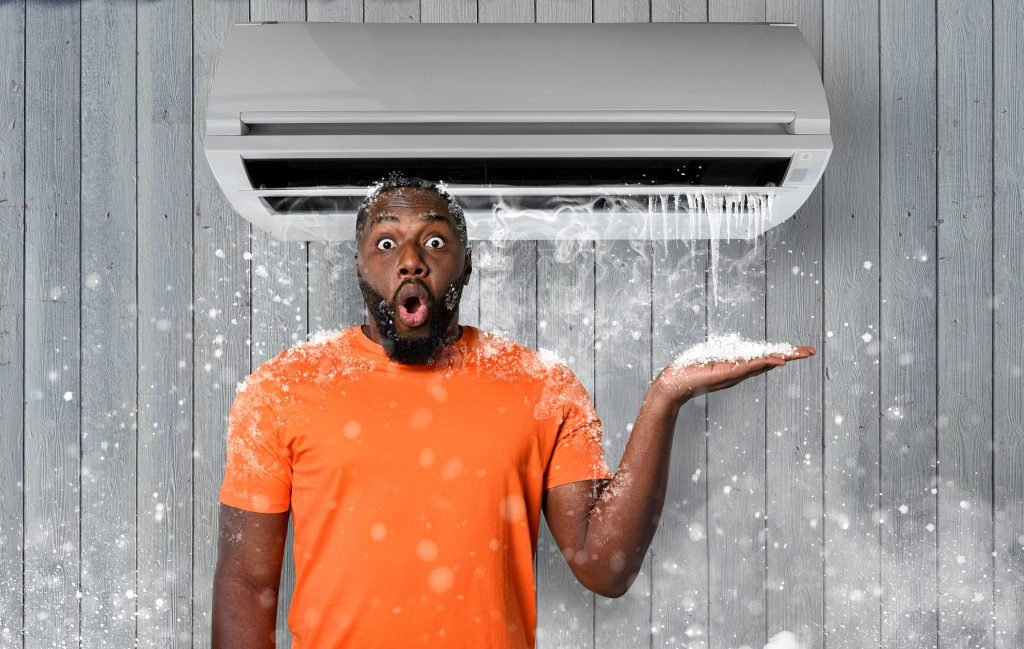Nel settore della refrigerazione, la temperatura del bulbo secco e la temperatura del bulbo umido sono due parametri cruciali. Non influenzano solo l'efficienza operativa di aria condizionata sistemi ma anche direttamente legati ai livelli di comfort della nostra vita quotidiana.
Temperatura a bulbo secco
Temperatura a bulbo secco, è ciò che comunemente chiamiamo temperatura dell'aria. È la temperatura effettiva dell'aria. Nel settore della refrigerazione, la temperatura a bulbo secco è un parametro comunemente utilizzato nei sistemi di controllo automatico, impiegato per regolare l'apertura delle valvole, regolare le temperature interne, e altro ancora.
Misurazione della temperatura a bulbo secco
La misurazione della temperatura a bulbo secco è molto semplice:
–Esporre il termometro all'aria.
–Evitare la luce solare diretta e le interferenze dovute all'umidità per ottenere una lettura accurata.
Ruolo della temperatura a bulbo secco nei sistemi di refrigerazione
La temperatura a bulbo secco influisce sia sulla nostra vita quotidiana che sul funzionamento dei sistemi di refrigerazione. Ad esempio:
–Durante l'estate, Le temperature interne a bulbo secco sono impostate tra 24°C e 26°C per garantire un ambiente interno confortevole.
—Sistemi di climatizzazione regola automaticamente le funzioni di raffreddamento in base alla temperatura a bulbo secco impostata per mantenere le condizioni desiderate.
Temperatura di bulbo umido
La temperatura a bulbo umido indica la temperatura più bassa che l'aria può raggiungere in condizioni di umidità costante. È la temperatura registrata quando l’aria passa su un tessuto bagnato (saturo d'acqua), facendo evaporare l’acqua e assorbendo calore, raffreddando così il termometro.
Misurazione della temperatura di bulbo umido
Per misurare la temperatura a bulbo umido è necessario un termometro speciale avvolto in un panno umido:
–Poiché l'acqua evapora dal panno, il calore viene assorbito, facendo sì che il termometro mostri una temperatura inferiore alla temperatura a bulbo secco.
Caratteristiche della temperatura di bulbo umido
–La temperatura del bulbo umido è strettamente legata all’umidità dell’aria.
–Quando l'aria è secca, l'acqua evapora rapidamente, e la temperatura del bulbo umido è significativamente inferiore alla temperatura del bulbo secco.
–Quando l'aria è quasi satura, l'evaporazione rallenta, e la temperatura del bulbo umido si avvicina alla temperatura del bulbo secco.
Così, La temperatura a bulbo umido non solo riflette i livelli di umidità dell’aria, ma aiuta anche a valutare il potenziale di raffreddamento evaporativo.
Applicazioni nella refrigerazione
1. Impostazione e controllo della temperatura
In sistemi di climatizzazione, la temperatura a bulbo secco funge da riferimento chiave per l'impostazione temperatura interna, mentre la temperatura del bulbo umido viene utilizzata per regolare l'umidità relativa interna. Misurandoli entrambi, può calcolare l'umidità relativa e regolare i sistemi per garantire un ambiente interno ottimale.
2. Valutare le prestazioni di raffreddamento
Le variazioni delle temperature a bulbo secco e a bulbo umido ne sono indicatori aria condizionata prestazione:
–La velocità e l’entità della riduzione della temperatura a bulbo secco riflettono la capacità di raffreddamento del condizionatore.
–Osservare i cambiamenti nella temperatura del bulbo umido rivela quelli del sistema deumidificazione efficienza.
3. Progettazione e funzionamento della torre di raffreddamento
La temperatura del bulbo umido gioca un ruolo fondamentale nella progettazione delle torri di raffreddamento:
–Il principio delle torri di raffreddamento si basa sul raffreddamento evaporativo, dove il calore viene rimosso tramite evaporazione dell'acqua.
–Conoscere la temperatura del bulbo umido esterno aiuta a determinare la temperatura minima raggiungibile dalla torre di raffreddamento, consentendo una progettazione efficiente e una strategia operativa.
Misurazione e influenza delle temperature di bulbo secco e di bulbo umido
Misurazione della temperatura a bulbo secco
La misurazione della temperatura a bulbo secco è semplice, sono necessarie solo precauzioni contro la luce solare diretta e le interferenze dell'umidità.
Considerazioni sulla misurazione della temperatura a bulbo umido
Velocità del vento: La temperatura del bulbo umido è significativamente influenzata dalla velocità relativa. Flussi d'aria più elevati migliorano lo scambio di calore e umidità, portando a letture più accurate.
Radiazione: Evitare la radiazione diretta durante la misurazione per garantire la precisione.
Condizioni del panno bagnato: La scelta del tessuto, misurare, e il livello di saturazione del panno bagnato influisce sulla precisione della misurazione.
Cos'è la temperatura del punto di rugiada?
La temperatura del punto di rugiada non è solo una misura cruciale dell'umidità dell'aria, ma anche un parametro chiave nella progettazione e nel funzionamento di apparecchiature di refrigerazione.
La temperatura del punto di rugiada si riferisce alla temperatura alla quale il vapore acqueo presente nell'aria inizia a condensarsi in gocce d'acqua. Sotto una determinata pressione, quando l'aria umida viene raffreddata al punto in cui raggiunge l'umidità relativa 100%, il vapore acqueo si condensa in goccioline d'acqua. A questa temperatura, l'aria è considerata satura, e inizia la condensazione.
Questo principio si basa sulla relazione tra il contenuto di umidità e la temperatura dell’aria satura: il raffreddamento dell'aria insatura fino al punto di rugiada causerà la formazione di condensa.
Relazione tra temperatura del punto di rugiada e refrigerazione
1. Temperatura del punto di rugiada nei sistemi di condizionamento dell'aria
La temperatura del punto di rugiada è fondamentale per il controllo dell’umidità interna.
–Mentre l'aria passa attraverso il condensatore, una parte del vapore acqueo si condensa in goccioline d'acqua e viene espulso, riducendo l'umidità dell'aria.
–Questo processo abbassa la temperatura del punto di rugiada dell’aria, creando un ambiente confortevole.
2. Temperatura del punto di rugiada nella cella frigorifera
In stanza fredda, il controllo della temperatura del punto di rugiada impedisce la condensazione dell'umidità sulla superficie delle merci immagazzinate, evitare così deterioramenti o danneggiamenti.
Misura e influenza della temperatura del punto di rugiada
Misurazione della temperatura del punto di rugiada
Utilizzare speciali misuratori del punto di rugiada o igrometri per misurare la temperatura del punto di rugiada. Questi strumenti calcolano la temperatura del punto di rugiada in base all'umidità relativa, pressione dell'aria, e temperatura.
I fattori influenzano la temperatura del punto di rugiada
Pressione atmosferica: Una maggiore pressione dell'aria aumenta la pressione del vapore di saturazione e aumenta la temperatura del punto di rugiada.
Temperatura dell'aria: Temperature dell’aria più basse riducono la pressione del vapore di saturazione, portare ad una temperatura del punto di rugiada più bassa.
Contenuto di umidità dell'aria: Un maggiore contenuto di umidità nell’aria determina una temperatura del punto di rugiada più elevata.
Precisione dello strumento: La precisione dei misuratori del punto di rugiada influisce in modo significativo sull'accuratezza della misurazione, fornire dati affidabili per sistemi di refrigerazione.
Applicazioni nella refrigerazione
1. Deumidificazione e umidificazione
Controllando la temperatura del punto di rugiada, sistemi di refrigerazione può deumidificare o umidificare l'aria.
–Consente di abbassare la temperatura del punto di rugiada deumidificazione.
–Aumentare la temperatura del punto di rugiada facilita l'umidificazione.
2. Efficienza e ottimizzazione energetica
Il controllo accurato della temperatura del punto di rugiada aiuta a ottenere un funzionamento efficiente dal punto di vista energetico dei sistemi di refrigerazione, ridurre al minimo il raffreddamento eccessivo e il consumo energetico non necessario.
3. Selezione e progettazione delle apparecchiature
La temperatura del punto di rugiada è un fattore chiave nella scelta e nella progettazione apparecchiature di refrigerazione per soddisfare specifici requisiti ambientali e operativi.
Relazione tra bulbo secco, Bulbo umido, e temperature del punto di rugiada
1. Bulbo secco vs. Temperature di bulbo umido
–La temperatura a bulbo secco è sempre maggiore o uguale alla temperatura a bulbo umido.
–La differenza tra i due (differenza di temperatura bulbo secco-bulbo umido) riflette l'umidità relativa: una differenza maggiore indica aria più secca, mentre una differenza minore indica aria quasi satura.
2. Bulbo secco vs. Temperature del punto di rugiada
–La temperatura del bulbo secco è sempre maggiore o uguale alla temperatura del punto di rugiada.
–La differenza tra i due indica lo stato di umidità dell’aria: una differenza maggiore indica aria più secca, e una differenza minore indica una maggiore umidità.
3. Bulbo umido vs. Temperature del punto di rugiada
–La temperatura del bulbo umido è superiore alla temperatura del punto di rugiada a meno che l'aria non sia satura, nel qual caso i due sono uguali.
Conclusione
Bulbo secco, bulbo umido, e le temperature del punto di rugiada sono parametri essenziali sistemi di refrigerazione, svolgere ruoli vitali in controllo della temperatura, regolazione dell'umidità, ed efficienza energetica.
Spiegazione semplice come:
Temperatura a bulbo secco: riflette la temperatura effettiva dell'aria e viene utilizzato per calcolare il carico termico sensibile.
Temperatura del bulbo umido: riflette il limite di raffreddamento dell'aria e viene utilizzato per calcolare il carico termico latente e il valore di entalpia.
Temperatura del punto di rugiada: riflette lo stato saturo del vapore acqueo nell'aria e viene utilizzato per deumidificazione e controllo dell'umidità.
Comprenderne le relazioni e le applicazioni consente di migliorare le prestazioni del sistema, migliorare il comfort, e ottimizzare il consumo energetico, rendendoli indispensabili sia nella vita industriale che quotidiana.
Eventuali commenti?
Benvenuto, lascia un messaggio o ripubblicalo.












